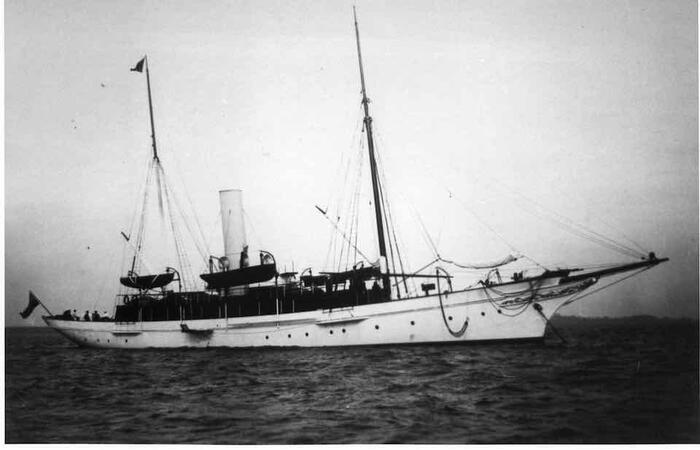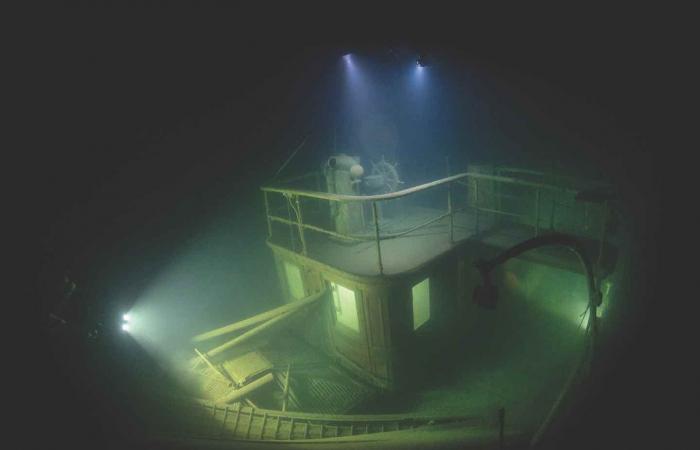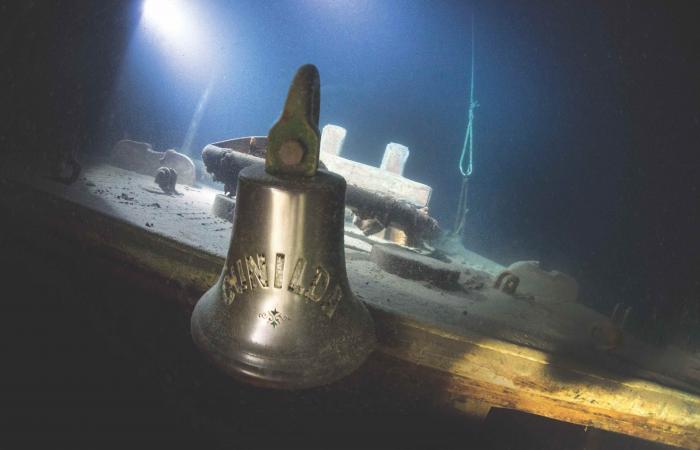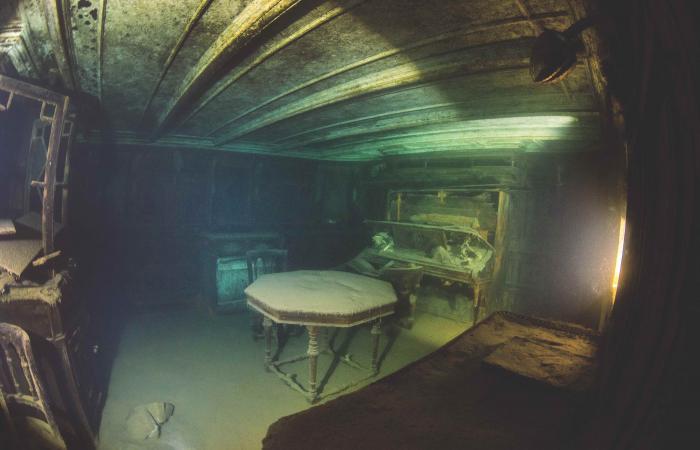There have been many shipwrecks on Lake Superior over the years. To many, this statement is as obvious as saying the sky is blue. However, what few people grasp is the sheer variety of ships that have sailed this lake, and in some cases, ended up on the bottom. From large freighters like the SS Edmund Fitzgerald or SS Kamloops to the mysterious loss of the French minesweepers Cerisoles and Inkerman. There is one ship that rests near the town of Rossport that continues to fascinate shipwreck enthusiasts to this day.
The Gunilda was a one hundred and ninety five foot long steam powered yacht built in 1887 at a shipyard in Leith, Scotland and ended up in the ownership of a Yorkshire man named F.W. Skyes who would own the ship from 1898 until 1903. In that year it was sailed across the Atlantic Ocean and purchased by an American millionaire named William L. Harkness. Harkness was an oil baron from Cleveland, Ohio who between 1903 and 1909 would cruise on the Gunilda across the Atlantic and the Caribbean a number of times. In 1910 he would sail the Gunilda into the Great Lakes.
In the summer of 1910 Harkness went on a cruise of the southern coast of Lake Superior to Duluth. He enjoyed the trip and it was decided that the next year he would cruise the northern shore of Lake Superior to the city of Port Arthur.
On August 22nd, 1911 the Gunilda entered Superior for the second time. On board was Harkness and his family, wife Edith and his two children Louise and William. Joining them on the trip was another wealthy American, J.D.Harding who brought with him his wife and son. In total between the two families and the crew there were thirty-six people on the Gunilda that summer. The Gunilda was commanded by Captain Alexander Corkum.
As the Gunilda sailed towards the town of Rossport efforts were made to hire a pilot to navigate the local waters of the region. However, it is said Harkness felt the prices ranging from fifteen to twenty-five dollars were too high and refused to pay. This would spell disaster only a week after entering the lake.
In the morning of August 29th the Gunilda was sailing and was only about five miles (eight kilometers) from Rossport when it hit McGarvey Shoal north of Copper Island and became stuck on the rocks. A quick examination revealed the damage was minor and Harkness travelled to Rossport on one of the small boats the Gunilda had aboard to arrange for the vessel to be pulled off the rocks.
The tugboat James Whalen and the wrecking barge Empire were dispatched to help and while they waited Harkness had the rest of the passengers sent to Port Arthur via train so they could return home while he waited. When the two craft arrived Harkness boarded the Whalen and they set off for the Gunilda.
It is said Harkness and the Whalen’s captain argued on how to remove the ship from the rocks and ultimately Harkness won out. The attempt would end in disaster for the yacht as on the second attempt the Gunilda listed to her starboard side as it entered the water and began to sink, the skeleton crew abandoning ship as it went under.The loss of the Gunilda meant Harkness had to return home without his ship, later he would purchase another yacht before passing away in 1919 but the legacy of the Gunilda would long outlive the ship’s owner.
The wreck would be discovered some time later and in 1967 would be dived on for the first time by Chuck Zender. The ship was in two hundred and seventy feet of water and was in remarkable condition. In 1980 the famed Jacques Cousteau and his Cousteau Society would dive on and film the wreck using the SP-350 Denise diving saucer, later calling it the most beautiful shipwreck in the world. The ship’s fame globally would continue into the twenty-first century as in 2019 the Professional Association of Diving Instructors listed the Gunilda as the second best technical diving site in the world, only being beaten by the SMS Markgraf, a First World War German battleship resting in Scapa Flow, Scotland. That being said, diving on the wreck is not a recreational dive and is very much a technical dive which requires considerable preparation as it is not safe and is very dangerous if unprepared. Two men have tragically died while doing so. Those men were Charles “King” Hague in 1970 and Reg Barrett in 1989. It must also be said that removing anything from the wreck is illegal.
Because of the overall good condition of the wreck there were plans to raise the ship over the decades. Local diver Fred Broennle would buy the perpetual salvage rights from Lloyd’s of London who owned the rights to the wreck on the condition that he could raise her. However, he would run out of money and all plans were put on hold. There has not been a real attempt to raise the ship since 1976 to my knowledge.
Today the Gunilda continues to rest on the bottom of Lake Superior, still in amazing condition for a vessel that has been underwater for more than a century at this point.
There is a display about the Gunilda at the Lakehead Transportation Museum. The museum will be reopening in spring 2022 for tours.
The tugboat that was involved in the original recovery attempt, the James Whalen, is at the time of this writing on display at the Kaministiquia River Heritage Park in Thunder Bay.
In the end, the Gunilda is just one of many shipwrecks on the Great Lakes; however, she is remembered for her unique story, both before and after its sinking.









